Reality of SMA and Physical Therapy
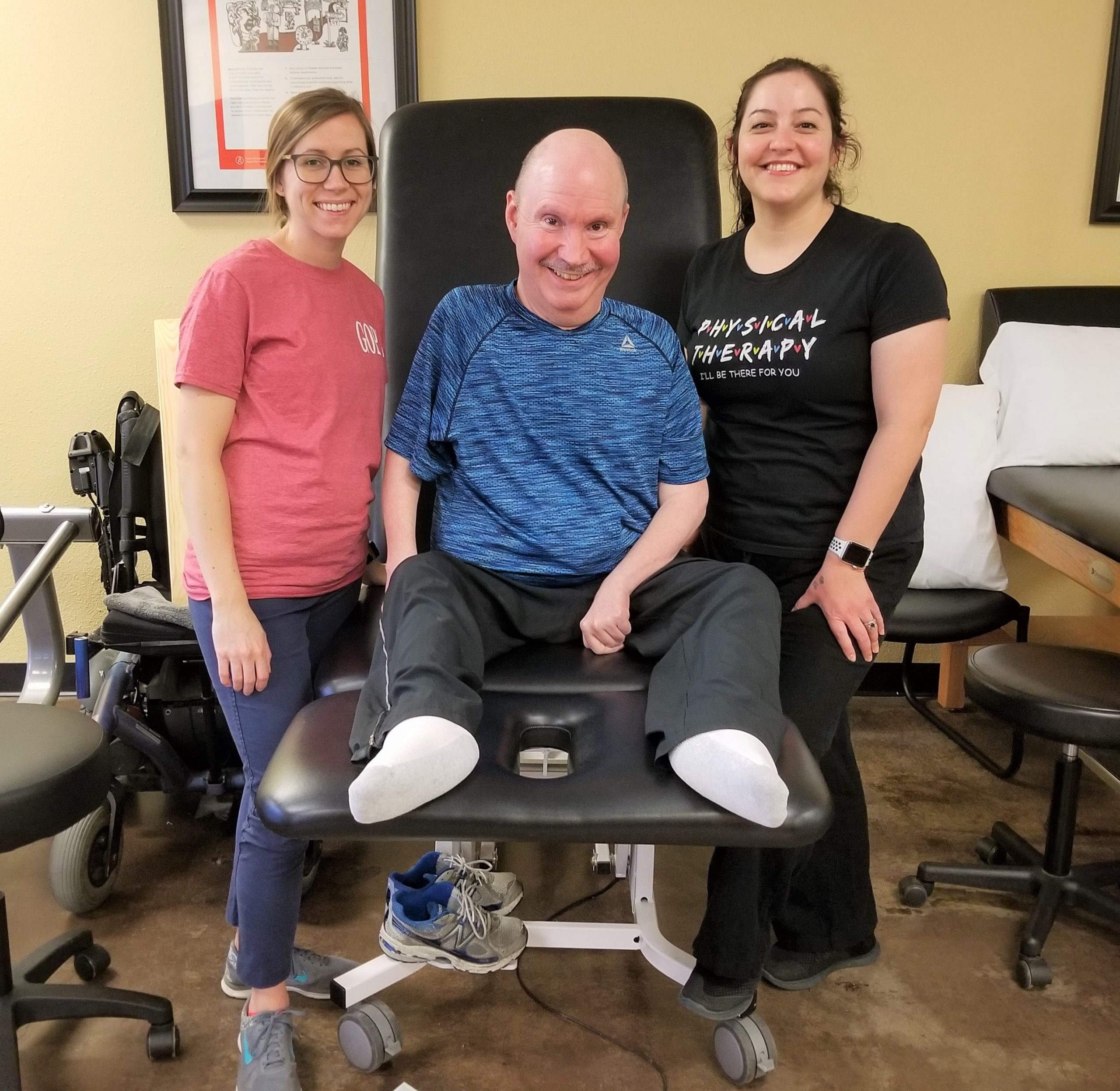
Before meeting Michael, my patient with SMA, I had a lack in knowledge of what SMA really was, and what kind of goals were realistic to set for him to meet. I had no idea what my expectations should be regarding his progress and how to meet those expectations. I was nervous that I would not be able to assist him in improving and meeting all of his expectations for physical therapy. After doing a lot of research, I came to find that SMA looks different in each individual, and I would not really be able to be “prepared” for this exact case.
After meeting Michael for the first time and getting to know him, my fears and nervousness quickly subsided. He approached therapy with a very positive position and an open attitude. He sat down with us, his therapists, and explained to us not only what@ SMA was, but how it has affected him personally, and what his realistic goals were. Even though he was a little nervous to try some things we wanted to attempt, he has always been very open and honest, making it easier for us to transition him through his plan of care, which included changing these exercises when we needed to.
Prior to starting therapy, he had little to no core control, and he was unable to sit unsupported. He also had significant contractures in both his hamstrings, gastrocnemius and biceps, secondary to sitting in a chair most of the time with no feet rests. While he may never fully regain his full range of motion, improving these contractions can increase his independence and comfort in his every day life.
We have worked on his strength, range of motion, and core control over the past years that he’s been in therapy with us, and he’s progressed significantly in all of the areas previously mentioned. He is now able to sit unsupported on an uneven surface with perturbations. He is also able to perform active range of motion side bending, flexing and extending his trunk while sitting unsupported, secondary to increased strength and core control.
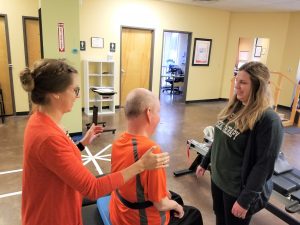
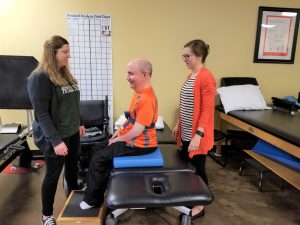
Creating and implementing exercises that are functional for Michael has not always the simplest of tasks, but with his trust, we are able to attempt several different activities, such as assisted bridging, to increase ability to dress and move around in bed with increased independence. We have also recently been working on performing active range of motion bilateral side bending, as well as trunk flexion and extension while sitting unsupported to promote increased independence with weight shifting and dressing while sitting unsupported on the side of his bed or in his chair.
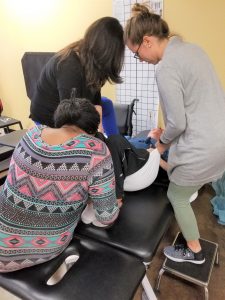
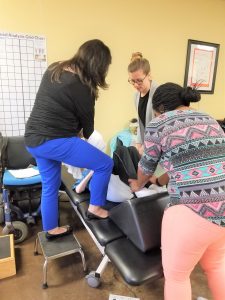
Although we have had a lot of success and improvements, there have also been exercises we have tried that have not quite worked out like we had originally planned. The previously mentioned assisted bridge exercise had good potential and purpose, but we quickly discovered that Michael didn’t yet have the flexibility or strength to perform this exercise without maximal times two assistance. This is something we have experienced a few times with different exercises. We first try modifying the exercises specifically for him, but some of these exercises, Michael just isn’t ready for at this time. We can always bring these exercises back later, when he’s a little stronger and we feel he’s ready to try them again.
When we have PT or PTA students in our clinic, we make sure they have the opportunity to work with Michael for many reasons. He is not like most patients we see in an outpatient clinical setting, and he poses challenges differently than other patients. Even though students are taught what SMA is in school, there is no way to really be prepared for a patient with a neurological disorder like SMA, without actually working with a patient with this particular disease. Working with Michael teaches our students to listen to their patients, and think on their feet when they need to modify exercises and stretches.

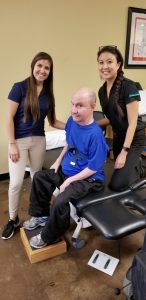
Working with Michael has had its challenges and rewards. To see him come so far and progress in his independence and functional mobility, as well as his confidence with his daily activities has been rewarding. We will continue to work towards his increased independence and goals, and will be continuing to measure his progress, and advance and alter his exercises to help him meet his goals of greater independence.
======================== Patient Perspective ========================

When I first started physical therapy, in October 2017, I had no idea what to expect with regards to potential benefits. For the majority of my life, I had always heard that patients like myself, with a neuromuscular disease, should never attempt physical therapy. The medical reasoning behind this decision was that by stressing the muscles, and trying to make them stronger, this would only cause further damage, possibly resulting in negative consequences. After my 2nd loading dose of Spinraza, my neurologist told me that it was okay for me to start physical therapy, because my body was now receiving the protein that it needed. Hearing my neurologist tell me that it was okay to start physical therapy, were words that I waited to hear for a long time, and it didn’t take me long to start the process of finding a qualified physical therapist who could help me in my journey. Little did I know, finding a physical therapist that would be willing to work with me would also present a challenge. Many of the physical therapists that I spoke with, were reluctant to work with me, and after listening to the reasons why they didn’t want to work with me, I quickly realized that their hesitations revolved around their lack of knowledge regarding SMA.
My journey led me to Green Oaks Physical Therapy, in Irving Texas. It was there that I met my 2 physical therapists, Laura and Emily. After Laura finished the initial evaluation, she told me that they could develop some exercises that would not only help me, she felt that these exercises could also make me more independent in my day-to-day life.
Over the course of nearly 3 years, Laura and Emily have worked with me to not only improve my core strength, we’ve also been successful in getting me to be able to sit without assistance, along with improving my breathing, and I’ve also seen tremendous improvements in my flexibility and range of motion.
I’m a huge advocate regarding physical therapy, and I preach this importance to anyone that will listen. I feel that patients that are on active treatment with an FDA approved SMA therapy, would benefit from taking physical therapy while undergoing their treatments.
As Emily stated in her article, we’ve had a lot of success during this time, and while we’ve encountered a few exercises that were too difficult for me to do, we look at these challenges as opportunities for growth. All of us understand that an exercise that may be too difficult to do right now, doesn’t mean that it will always be an exercise that will be too difficult. These challenges just let us know that we need to work harder in certain areas, and after focusing on my weaknesses, we can then attempt to do these exercises again at a later date. Failure today doesn’t mean failure tomorrow, and having physical therapists that are dedicated and driven like Laura and Emily are, I know that the work that they are doing, along with the work that I’m doing, will result in a brighter future for me.
